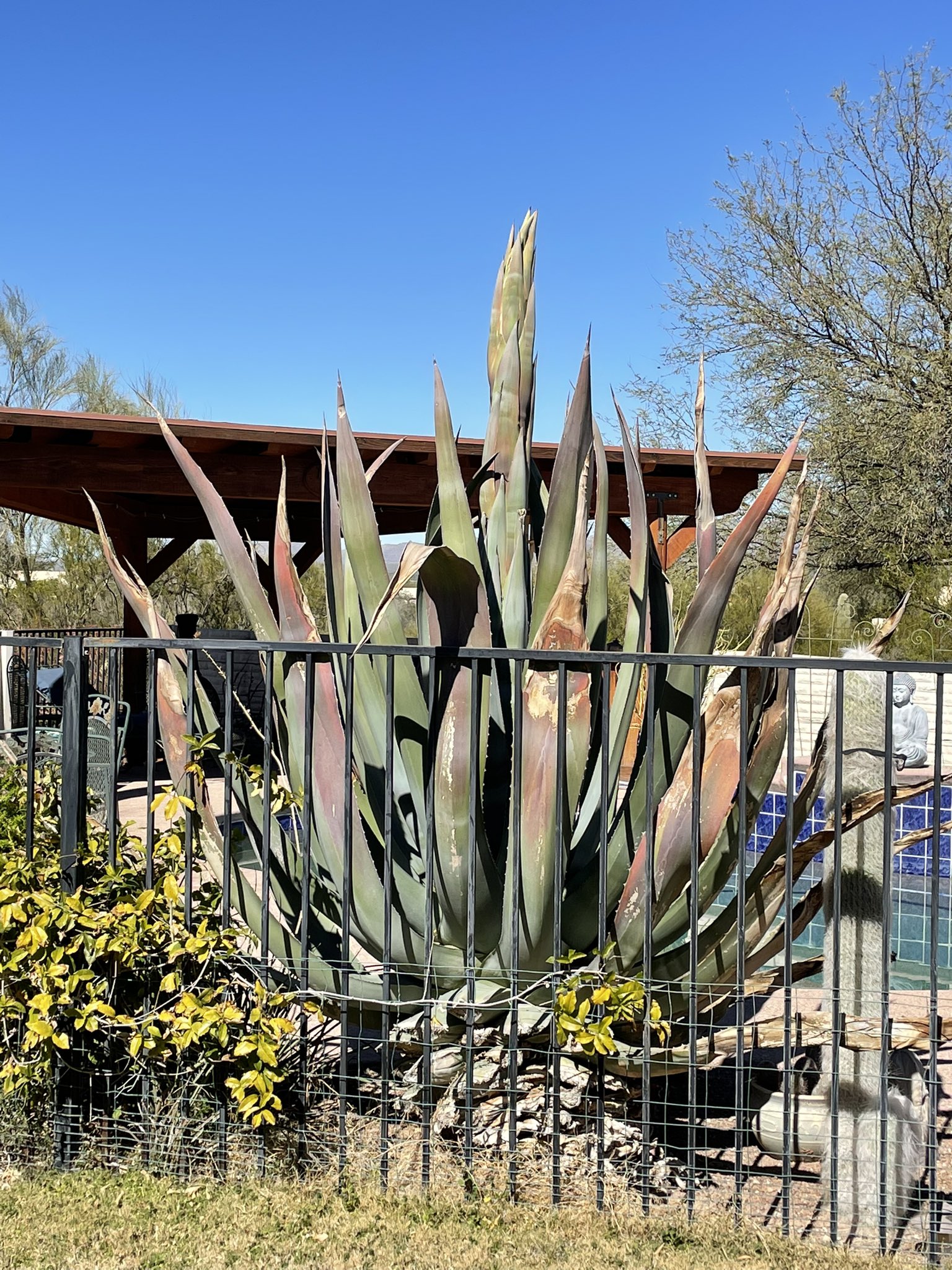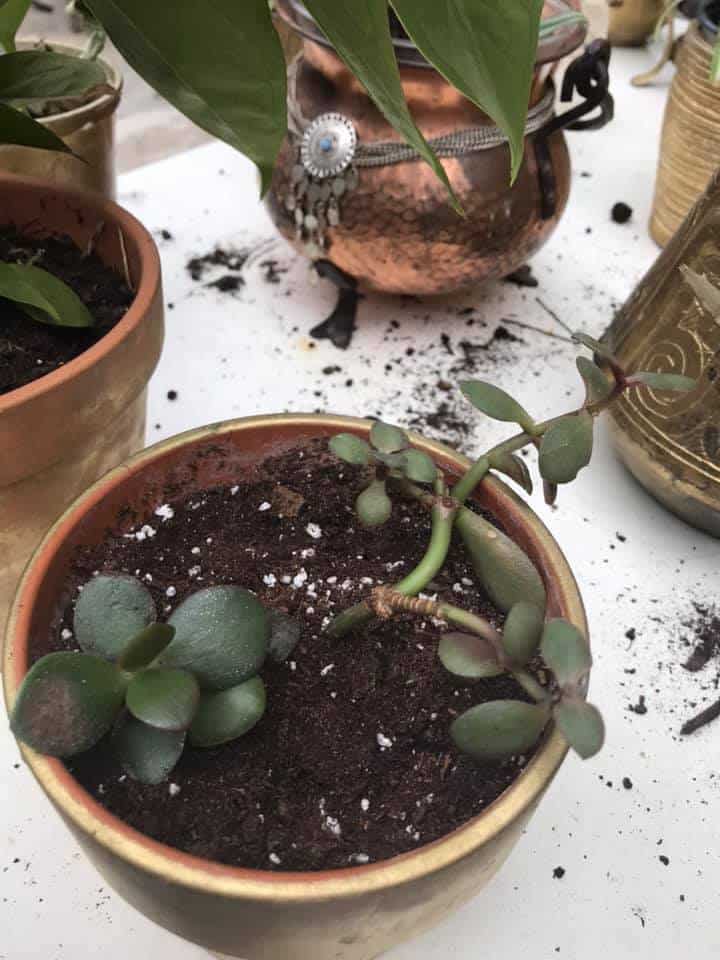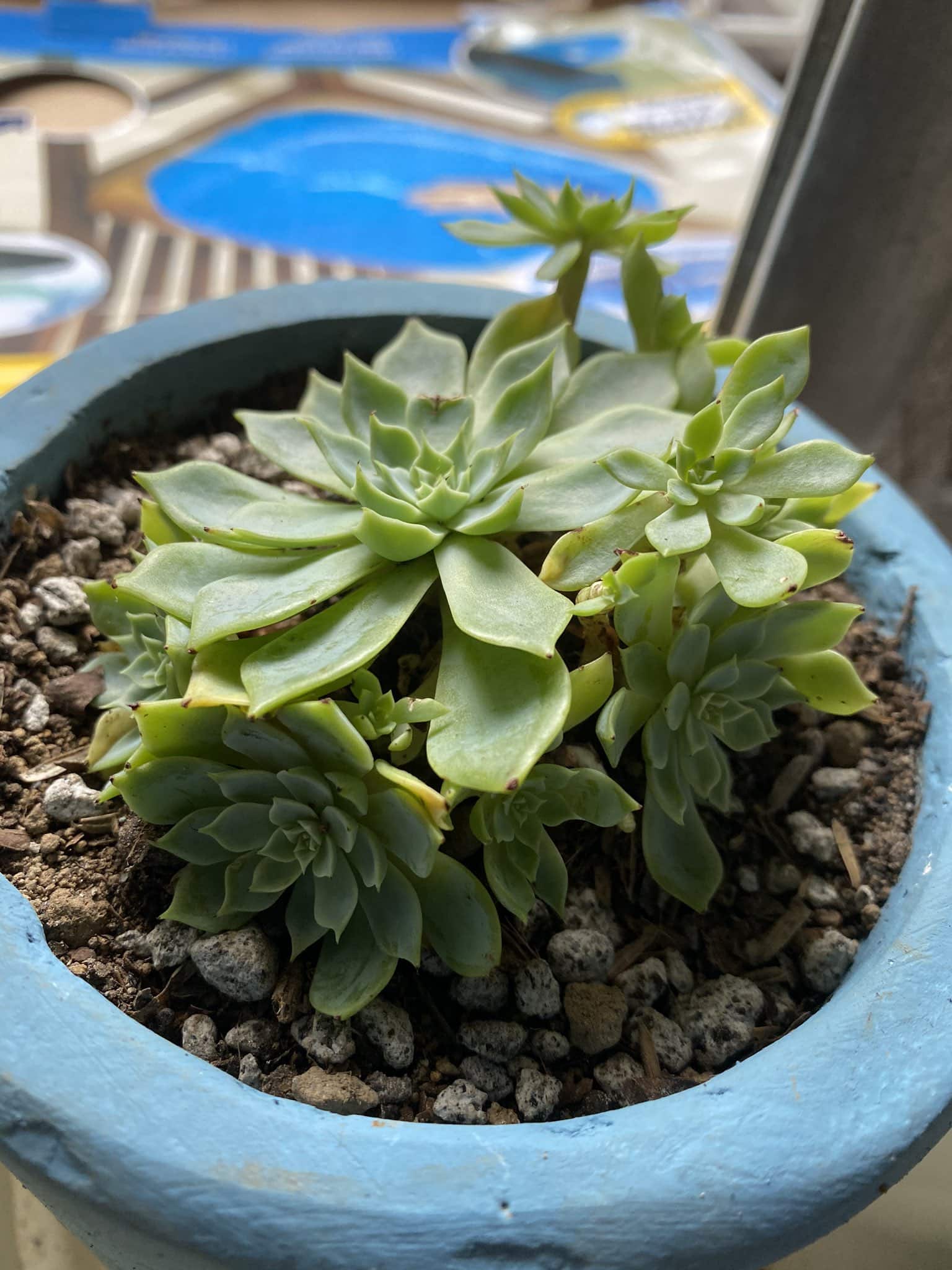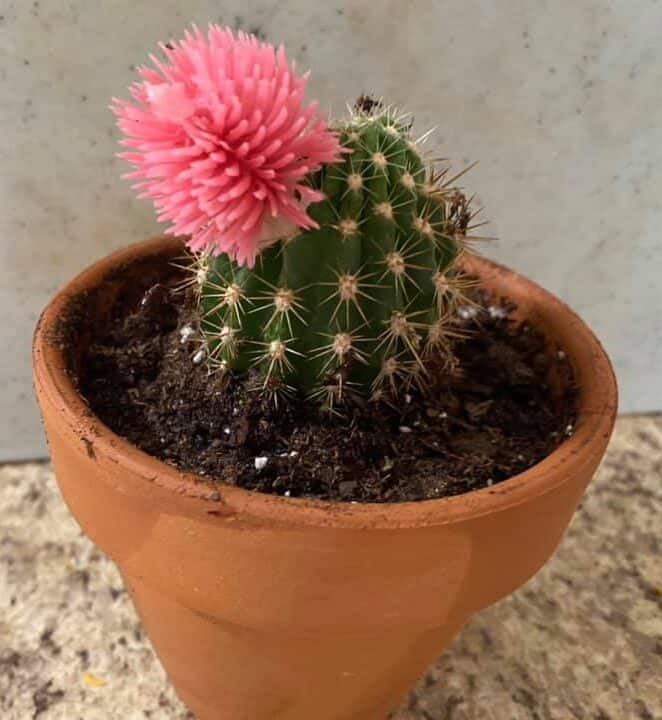Despite the easy care needs and low maintenance nature, Succulent plants can succumb to death and may show dying signs under poor care.

Succulents have different lifespans based on various types and habits. For instance, a Hens and Chicks succulent can live for three years or above, while a Jade plant survives a 70-100 years long period.
But that does not mean you can buy succulents and leave them to grow without care.
Let me hold your hand and guide you to revive the dying Succulents through this article!
Table of Contents Show
What Does a Dying Succulent Look Like?
Succulents have the potential to keep your room jolly and refreshing with their hardy drought resistant leaves.
But once they wilt and give a mushy look with the leaves turning brown and black.
Besides, dying Succulent plants also showcase the following signs!
- Yellow or black stems and leaves have a spongy texture.
- Brown Succulents appear as if scorched and burnt.
- Shriveled and wrinkled leaves start drooping.
- Succulents grow tall, with lower leaves falling off.
- The root color changes to brown and appears mushy and soft.

And to understand the difference with natural senescence, look at just a single sign of leaves falling off from the bottom-up.
The old Succulent leaves droop away to decrease the fight for nutrients and light with new leaves.
However, only knowing the signs are not going to be of help as the remedies are what is going to save the Succulents.
So firstly, let us understand the causes of why your Succulent is dying.
Causes+ Solutions for Dying Succulents
Succulents are less demanding plants and are ideal for bare minimum lovers of plants.
But neglecting the Succulents all the time will lead to the dieback of the plant as they also have a certain limit to their survival.
The list below explains all the major causes you should be aware of!
1. Overwatering Problem
Watering is an essential requirement for any plant except for Succulents that love the hot and desert-like environment.
But if you can not control watering, the moisture persists in the container of Succulents opposite the native land.
The moisture in the soil remains without draining out, making the root rot along with a brown spot on the leaves.

You can check the root color to be sure whether your Succulent is dying because of overwatering.
Overwatering mainly occurs in winter when Succulents are under dormancy, but people try to water according to the season.
Jade and String of Dolphins Succulents dying occur mainly due to overwatering.
If there are brown to black roots with the leaves dying from bottom to up, it is a sign that water has started to suffocate the roots of Succulents.
Even the soil remains moist and appears soggy, with logged water inviting different fungal diseases and causing root rot.
Solutions
- Put the pot near the window receiving direct sunlight until the soil dries completely.
- Also, shake off the wet soil from the roots and keep the Succulents in indirect bright light for about a week.
- You can also remove the root and keep it over a newspaper to dry the excess water.
- Sometimes the problem even lies in the potting mix, so try to change the potting mixture to a better draining one.
- Remove a mulch in the base of the Succulents to allow the water to evaporate.
- You can propagate the healthy Succulents to a new pot if the condition is beyond treatment.
- Change the pot from a plastic one to a terracotta pot for its ability to dry out the water faster.
2. Underwatering Condition
Seeing underwatered Succulents die may have startled you, but Succulents suffer from it.
Although the leaves and stems have reserves for water, the roots are shallow and always hungry for moisture.
While trying to maintain the watering schedule, the Succulents somewhere in mid suffer from underwater conditions.
During underwater conditions, the root does not receive the water as per requirement, and the soil compacts over time, ceasing the spread of root fibers.

The Succulents show shriveled and wrinkled leaves with drooping looks in response to overcoming the water stress.
Dying of Banana succulent is majorly due to long dry spells.
Even cracks in the soil are signals for underwater conditions.
Solutions
- Remove your pot from the location receiving too much bright light.
- Water the plant by bottom down approach directly into the roots until the water drains out of the drainage hole.
- Apply mulch below the plant, or add pebbles to control the evaporation during hot summer days.
- Continue watering the Succulents at an interval of a day till the leaves come back to their original state.
- If the soil has become compact, try to loosen them up with the help of a trowel without hurting the roots.
3. Light Issues
Usually, in the native land, Succulents adapt themself to drought and extreme heat conditions but are rare in indoor Succulents.
Indoor Succulent roots have limited growing space and prefer indirect bright light instead of direct light.
During extreme light conditions, the Succulents start to have scorched portions in their leaf with a brown burn.

And the burnt part cannot perform photosynthesis, leading to the death of the plant.
Moreover, scorched leaves are noticeable when you shift the Succulents from shaded to natural light areas.
Meanwhile, the Succulents start to show leggy growth and discoloration from green to pale yellow occurs in the leaves without proper light.
However, all the light requirement solely depends on your Succulents as some thrive in low light better.
Cactus love bright direct light but only if grown in the ground instead of a pot, while Howarthias and most Aeoniums are indirect bright light lovers.
Solutions
- Shift the potted succulents to a shaded place receiving only morning and evening sun rays.
- For Succulents in the ground, cover the plants with shade cloth to keep their plant cool during sunny days.
- Offer an hour of direct light if you plan to shift the Succulents from shade to outdoors.
- Rotate your Succulents every week so that every part receives equal light.
- If the Succulents are heat lovers, change the pot towards a South west facing window.
- Provide the plant with an artificial source in low light by using grow light.
4. Heavy Soil
Succulents prefer the type of soil that should be lightweight and well-draining to prevent root damage.
Even after knowing the Succulent soil choice, most gardeners tend to forsake the soil requirement and do not keep a check on the soil.
Over time, the soil becomes compact, blocking the water passageway and promoting soggy and wet conditions.

Soil problems usually occur when we pot the Succulents from the nursery directly.
Nursery soils are usually general soil with water retention quality, but Succulents require soil rich in sand with little clay.
Even I had to go through this problem, and I noticed the problem only when my Succulent showed signs of dying and water never left the pot.
A fun fact is that heavy soil can even lead to underwater conditions.
The underwater condition usually happens when the soil has hardened enough, not allowing even a drop of water to enter the roots.
Solutions
- Replace the potting mix with Succulent soil easily available in the market.
- To create perfect DIY soil, you can even make your mix with sand, potting soil, and perlite or pumice in a ratio of 2:2:1.
- Also, try adding gravel or pebbles into the soil to increase the porosity.
- Try to loosen the soil with the help of a trowel or a spade and mix organic compost to improve drainage.
5. Repotting Shock
Succulents are not versatile environment lovers and prefer to grow steadily in familiar surroundings.
But at least once in the lifetime of Succulents, you may need to try repotting them, which is when the stress hits the plant.
Transplanting shock mainly occurs when Succulents undergo contrasting soil conditions with limited water supply or if the roots suffer injury.

However, the stress is reversible if you can spot the plants early, and the best part is that you can easily note the signs.
When the Succulents are under repotting stress, the leaves turn yellow, brown, or black, and the new leaves grow slower than expected.
Repotting Shock is also the reason for the stunted growth of the Succulent with wilting and, lastly, dying.
Solutions
- While transplanting, check for any damaged roots, and if there are any, prune them away.
- Sometimes more leaves can cause rapid water loss, so you can even snip off some leaves when transplanting.
- Do not water the repotted Succulents on that day if it has any damaged root.
- Allow a day or two healing periods for the callous to appear on the damaged root part to water the Succulents again.
- Fertilize the Succulents with sugar water that might help decrease the plant’s stress but if it does not revive your plant, cease its supply.
- Avoid adding extra stress to the repotted Succulents by moving the plants during the summer or putting them in extremely humid and hotter surroundings.
6. Humidity
Most Succulents love low humidity, but Aeoniums, Sedums, Agave, Kalanchoe, and Aloe need high humidity.
If you make the mistake of keeping a humidity lover in a low-humid location, they may wilt and droop due to excess water loss to the atmosphere.

Similarly, Succulents of low humidity loathe highly humid conditions as this will cause disease and pests to persist and affect the plants.
High moisture in the air decreases leaves’ transpiration rate, affecting the physiological process entirely.
High humidity creates an ideal condition for fungus growth and causes diseases like black spots, anthracnose, mosaic disease, and pythium to appear in the Succulents.
When the unfavorable condition persists for a longer time, the Succulents start to rot and become a host of fungal diseases.
Solutions
- Install a humidifier near the space containing the Succulents to raise the air moisture.
- You can also mist the Succulents once a day during hot summer days to avoid dryness near the plants.
- If your plant is near an air cooler or radiator, move it away since it increases the humidity around them.
- Try to use a dehumidifier if the air moisture exceeds the requirement of Succulents.
- Beads of silica gel also work as a great absorbent of air moisture, helping to decrease humidity.
7. Pests Invasion
Pest invasion in healthy Succulents is rare, but other conditions like overwatering, high humidity, and low light promote the infestation.
At first glance, they might not be visible to our eyes, but after the heavy invasion, the plant starts to show signs.

I do not mean only the cuts and holes in the leaves and stems with signs. Instead, the main problem is that they suck out the sap of Succulents.
And when the invasion exceeds, other collection in your garden alongside the Succulents gets affected.
So learn the clear signs and remedies to control the insects from the beginning or after the invasion.
Solutions
Choosing a random insecticide or pesticide without knowing the exact cause can hurt Succulents.
Look at the table below to know the real cause of the symptoms with their solution.
| Pests | Symptoms | Solutions |
|---|---|---|
| Mealy Bugs | White, yellow or brown cottony substance on different parts of plants. They are found on the underside of leaves. | Dab the affected areas with a cotton dipped in rubbing alcohol once a week. Spray the affected area with insecticidal soap. |
| Aphids | Stunted growth with deformed leaves and sticky sugary substance near the sucking area, causing black sooty mold to appear. | Use garden hose for couple of times in a day with high-pressure. Treat it with insecticidal soap or neem oil. |
| Spider mites | First the plant turns into lighter color and later turns to silvery or white with web on the leaf along with brown spots in the plant. | Treat the affected succulents with miticide and keep it away from sunlight for a few week after the treatment. Wash it off with water. |
| Scales | Yellow foliage with small brown bumps as sit sucks the sap with its piercing mouth parts. | Remove the scales by using your hand or with the help of tweezers. Remove scales by spraying water with a hose or spraying systemic insecticide. |
8. Temperature Stress
Succulents do not like to change themselves and try to be fixed to their type based on their origin, mainly for the temperature requirement.
Succulents love dry and hot days and prefer to stay in that temperature for their entire life.
However, maintaining a similar condition for an entire year is impossible.
The major problems occur during the frost season as most popular Succulents cannot thrive in temperatures below 40ºF.

Succulent’s water reserve freezes once the temperature drops to the freezing point turning the leaves and stem black to brown and squishy.
Succulents grown in the ground suffer mainly from temperature stress causing the plants to die.
But stress is not always bad, as some even try to stress Succulents intentionally to bring out colorful foliage if practiced under controlled conditions.
Solutions
- Bring the potted succulents indoors before the first frost date to protect them from frosty nights.
- If your succulents are in contact with window glass, change the location, as the windows are cooler than your entire room.
- Retrieve watering the plant during winter days as the water can stunt the entire growth of Succulents.
- Look out for any mushy leaves and allow callous to appear over the plants before snipping off the leaves to shift the focus towards healthy growth instead of healing.
- You can even use a frost blanket to cover your ground Succulents.
- Some potted Succulents heat much faster. So shift them to a shaded area or under an umbrella.
9. Fertilizer Problem
Succulents are light feeders requiring less fertilizer to sustain their entire life cycle.
But when the fertilizer is imbalanced, the Succulents suffer from extra salt content and over-fertilizer.
An over-fertilized Succulents show a burnt and droopy look as the salts accumulate near the roots, obstructing the entry of water, oxygen, and other useful nutrients into the plant.

Not only over-fertilization can make the Succulents die. Sometimes, deficiency in nutrients can cause the leaves to turn yellow.
The yellowing is then followed by stunted growth of the Succulent, radiating a sickly look indicating the initial stage of dying.
Solutions
- Repot the Succulents into a different potting soil mixed with a basal fertilizer.
- Water the plant continuously until the excess salt drains out from the drainage hole, and put it under sunlight to dry the excess water.
- Look at the constituent of the fertilizer used, as Succulents prefer a balanced dose.
- Cactus and most Succulents that are slow feeders require only half the dose of the recommended ratio in the packaging.
- You can use granular fertilizer to release the nutrient slowly, and it can be a good alternative to liquid fertilizer.
10. Wrong Pot and Pot Size
Filling the room with beautiful and colorful glass or plastic vases can be a dream for you, but it is hell for Succulents.
Succulents require enough space to establish their roots and should have enough drainage holes to discard excess water.
Without a suitable pot, the Succulent root can rot, and the entire plant can get burned, leading to death.

For instance, a glass pot can refract the light like a magnifying glass, causing burns in the roots and the entire plant.
Meanwhile, plastic pots suffocate the Succulents due to slow drainage and easy heating.
As for the pot size, the depth should be twice the length of the root, and the width should be thrice the plant body to allow the free and proper growth of the Succulents.
However, a bigger pot creates the chances of water logging and soggy conditions, for you cannot estimate the exact water quantity.
Solutions
- Change the pot into a clay pot or terracotta pot instead of a glass or plastic container.
- Check out the pot for enough drainage holes. If it does not, change it immediately or make one yourself.
- Keep a net or muslin cloth above the drainage hole to prevent soil loss with the water.
- Check the drainage hole for any blockage if the wet condition persists.
Tips to Prevent Succulent from Dying
After knowing all the causes, you might feel exhausted and troublesome. So follow the tips below to keep Succulents healthy from the very beginning.
- Depending on the variety, Succulents preferring direct light should get at least 6 hours of direct sunlight.
- Keep the shade lovers in the indirect light with only morning rays falling on them.
- Succulents do not like highly humid places and prefer humidity between 40-60%.
- Most of the Succulents prefer the temperature from 55ºF-90ºF without fluctuations. Thus, learn to make the climate constant.
- As a drought escaper, Succulents require watering once every two weeks. You can also water by feeling the moisture with your hand in 2 days intervals.
- Use a balanced liquid fertilizer of a 10-10-10 ratio or a fertilizer with low nitrogen content every six months or before the growing season.

- Succulents love slightly acidic, loose soil rich with sand particles and have a pH of 5.5-6.7.
- The best time to prune the Succulents is during early spring. You can also prune the Succulents in early summer and fall, but the new growth will appear after winter.
- Repotting is done every two years, but if the Succulent is dying, you can do it immediately.
- To treat the diseased plant, use a copper-rich fungicide. If the infestation is high, remove them entirely to control the spread.
From Editorial Team
Having a cute pot with Succulents can always be a good asset for decorating the indoors and helps maintain a lively ambiance.
All of the Succulents require less care and maintenance from our side, making them ideal houseplants.
However, longer negligence will turn out to be an enemy of Succulents since they start to look sickly due to improper watering, light, and pot problem.
So try to keep Succulents as your friend to leverage their appearance at home.
Happy Fixing and Gardening!
